Kraków 2015-11-24
Construction
288 Section 1989-07-31
OKB Mikojan and Guriewicz MiG-29, version 9.12, UB
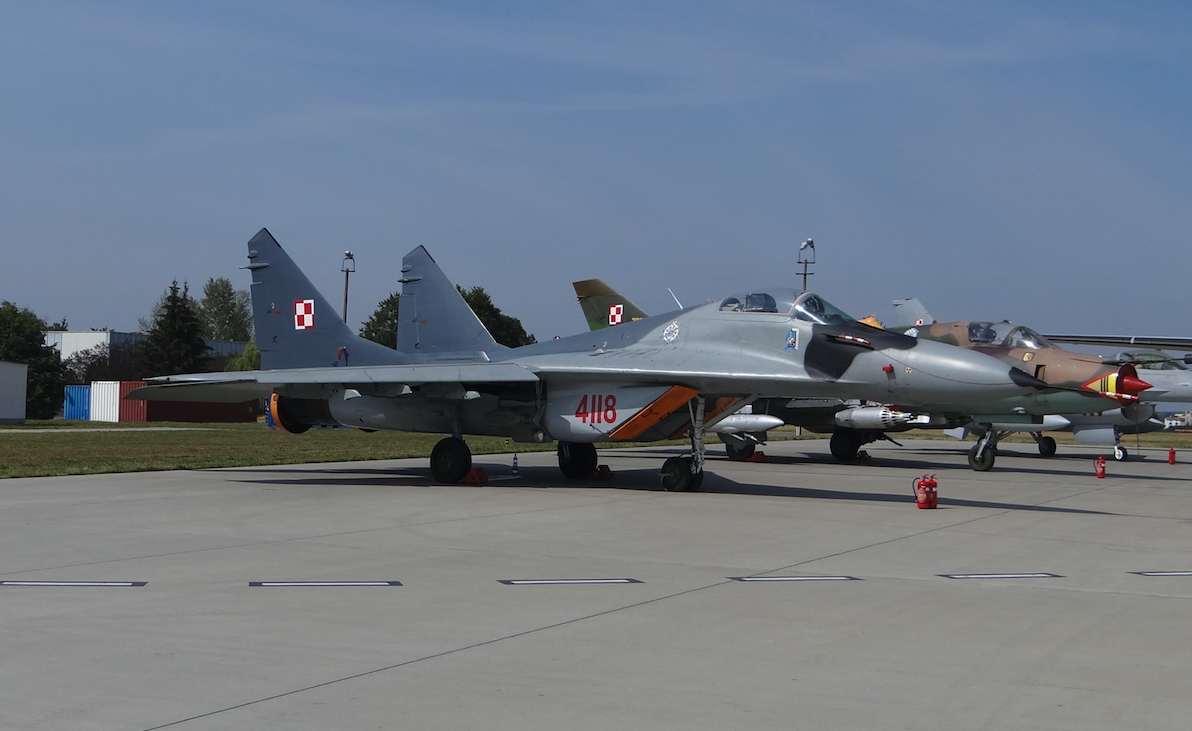
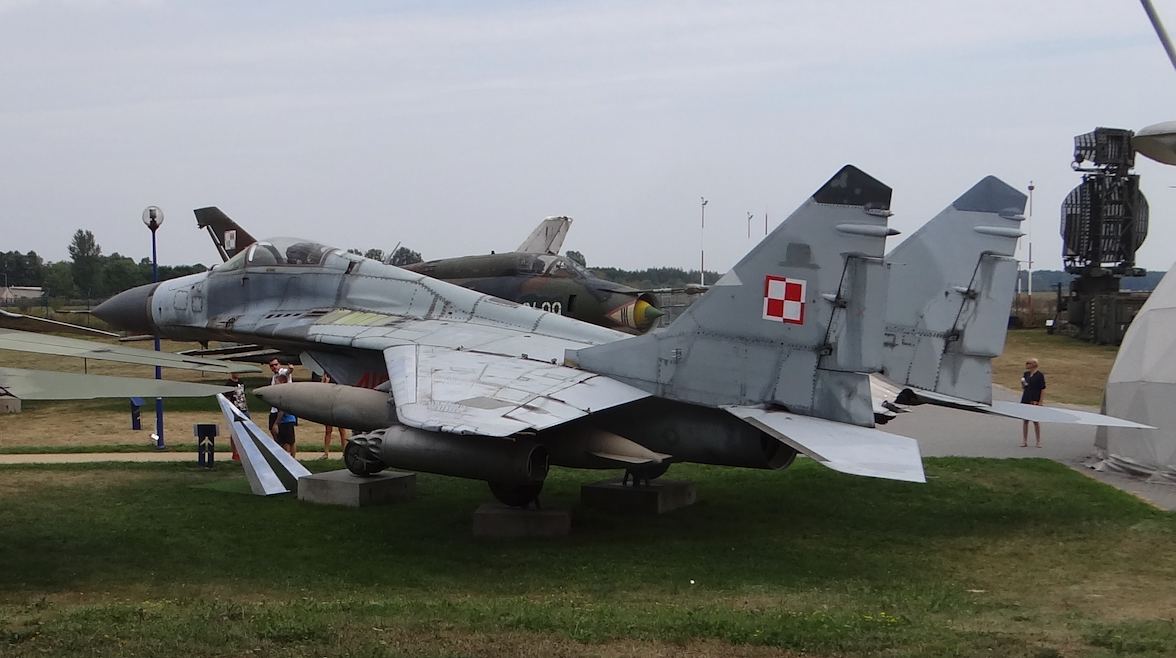
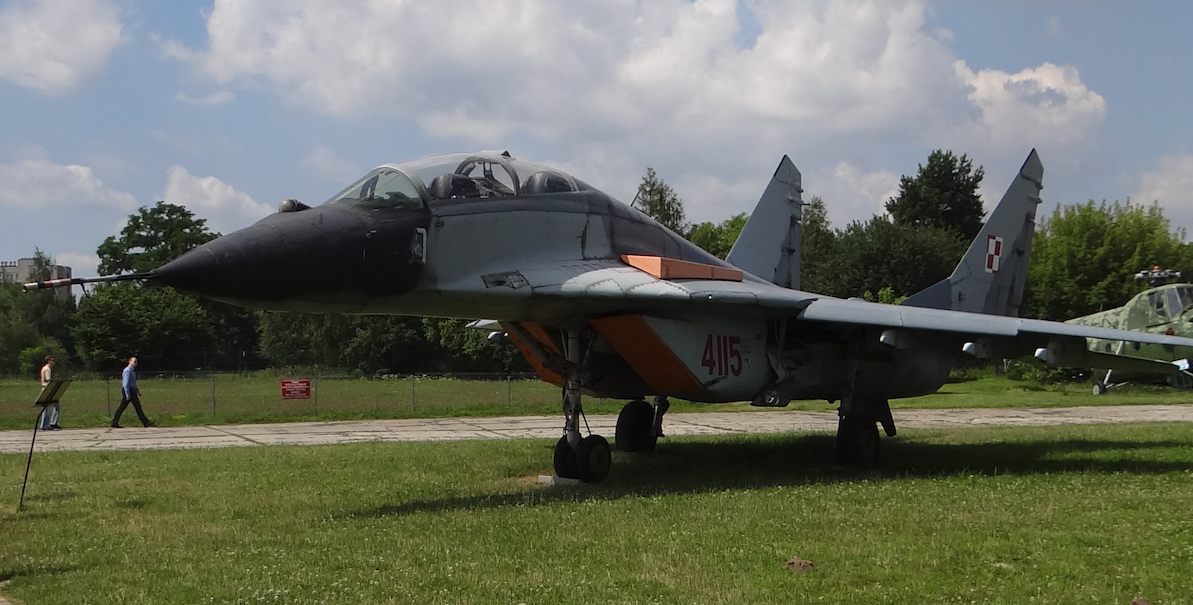
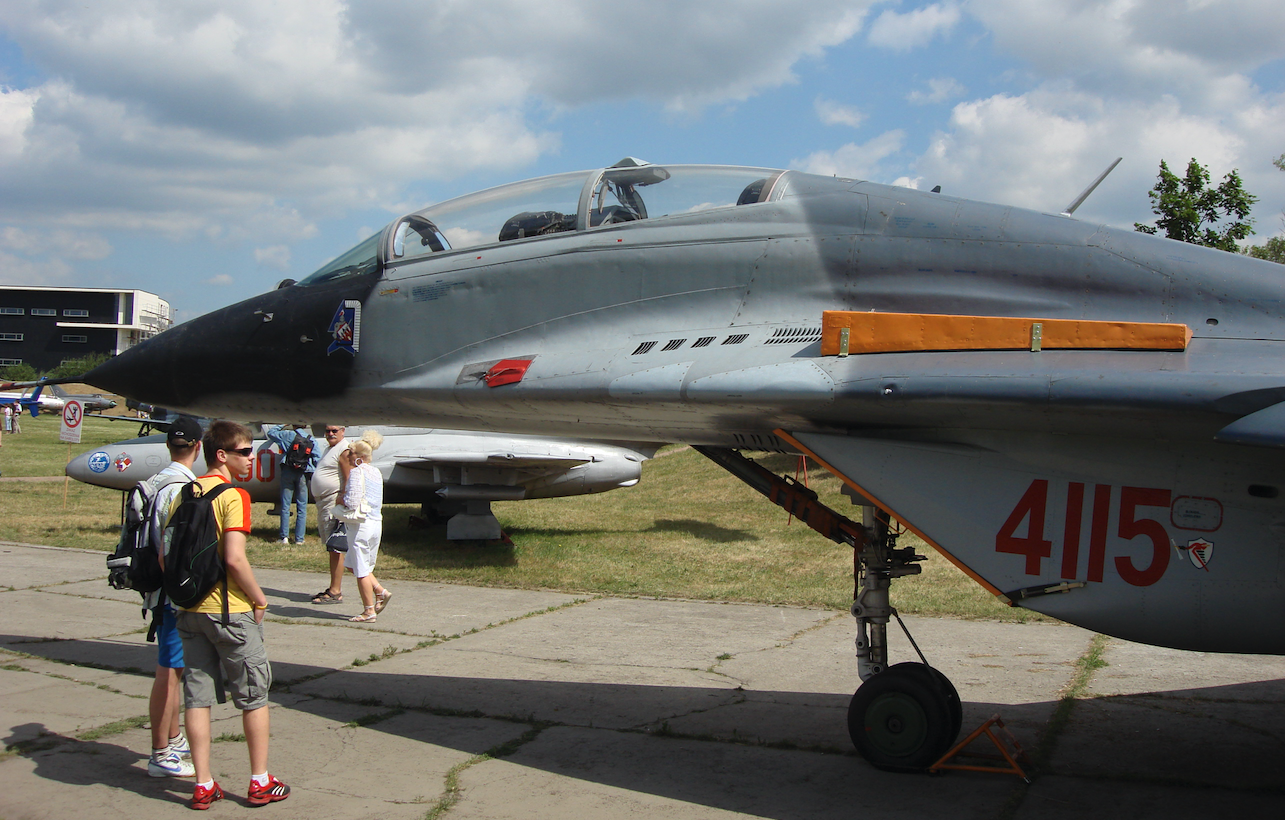

Construction MiG-29.
Mikojan i Guriewicz MiG-29 is a front, one or two-seat fighter with twin-engined propulsion. The construction of a completely metal plane. The airframe together with the wide supporting hull and the hull parts of the wings form one integral unit that generates 40% of the lift of the aircraft. Vertical height doubled. The airframe withstands overloads +9 and -3g. The plane destroying value is over + 14g.
Wings.
The MiG-29 has a band wing built from two parts: the basic one with a straight rake edge of 42 degrees and an auxiliary hull part with a curvilinear leading edge with a medium slant of 73 degrees. The wings are equipped with front flaps, rear flaps and ailerons.
Fuselage.
The fuselage is based on two engine nacelles and a residual hull. Complete metal. In the front part there is a radiolocation station. The two-seater version does not have a radiolocation station. One or two-seater cockpit, equipped with catapult seats. The K-36 catapulted seat allows rescue in the speed range of 80 - 1,300 km / h from a height of 0 m. Fuel tanks are located in the central part of the airframe. The fuselage is finished with aerodynamic brakes.
The two motorized gondolas house the RD-33 engines. Air inlets adjustable and fitted with curtains that prevent foreign bodies from being sucked into the engine during take-off and roll-out. During this time, the air to the engine is sucked in by the upper blinds.
Tail-plane.
Vertical height doubled, divided into rudders and ballasts. Horizontal leveling of the plate type.
Wheeled chassis.
Three-point chassis with front support. The chassis is completely retracted to the airframe. The front of the shin has double wheels that are controlled. Main chassis with single wheels.
Systems in MiG-29.
Mechanical control system with non-returnable hydraulic amplifiers. The control system has a system limiting the maximum values of the angle of attack.
The navigation system - MiG-29 received the inertial navigation system IK-WK-80-04 based on classical gyroscopes. The calculation of the aircraft's location along with the necessary calculations for the automatic pilot is done by the central CWU-M navigation system operating in the 9-bit system. The data obtained by the inertial system are compared with the others, based on the count of the traveled distance (information of the aerodynamic data center SWS-P-72-3-2J). Definitely more accurate position correction is provided by a radio-based near-navigation system RSBN cooperating with terrestrial beacons of the RSBN system ("navigation" mode) or PRMG ("landing" mode). In emergency situations, the ARK-19 automatic radiocompass serves to assist the descent of the landing plane. In the MiG-29, the navigation equipment complements the RW-15 radio altimeter.
The MiG-29 defense system - The MiG-29 aircraft is equipped with a radiolocation radar warning station type SPO-15ŁM and two 26 mm flare launchers and interfering dipoles placed on the extension of the vertical tail boards.
Radar RŁPK-29 Topaz N019.
In order to effectively use the carried weaponry, the aircraft was equipped with a SUW-29 weapon control system.
In Poland, MiG-29 aircraft have been modernized several times in order to be adapted to operate within the NATO armed forces.
Armament.
The armor is suspended on 5 external weapon nodes. The weight of the weapon is 3 500 kg. As a standard, the central node is intended for an additional fuel tank. MiG-29 aircraft can carry projectile missiles, missile missiles and bombs. The main weapons are R-27, R-73 and R-60 missiles. During a typical air combat mission, the aircraft carried two R-27R missiles (on internal beams under wings) and four short-range R-60 or R-60M.
The complement to the missile weapon in the air combat is built permanently, on the left, 30 mm gun GSz-301 with a supply of 150 ammunition. The initial speed of the projectiles is 860 m / s with a rate of fire of 1500-1800 shots per minute.
Drive.
As a drive, two turbine RD-33 turbines were used, created at OKB im. Klimowa from then Leningrad. The RD-33 was the first two-pass engine developed in CCCP for fighter aircraft. The engine tests on the dynamometer were carried out in 1972, and in 1981, its serial production was launched. A twin-engine drive system with widely spaced engines has a significant impact on the survivability of the aircraft if one of them hits. It takes about 1 hour to replace the engine. Lifespan of 350 hours. RD-33 is a two-shaft, two-flow motor with a 4-stage low pressure compressor (fan) and a 9-stage high pressure compressor. Behind the compressors are an annular combustion chamber and a 1-stage high and low pressure turbine. Behind the turbines and before the afterburner chamber, the exhaust gases mix with the cold external flow. The whole is completed with a supersonic, adjustable outlet nozzle.
The RD-33 engine without post-combustion has a maximum thrust of up to 2 x 49.92 kN, with unit fuel consumption reaching 0.079 kg / N / h. When using the minimum afterburning, the thrust reaches 2 x 54.91 kN, the maximum is 2 x 81.38 kN (then the fuel consumption reaches 0.210 kg / N / h). The engine length is 4 230 mm, the maximum diameter is 1000 mm and the weight of the dry engine is 1 055 kg. The engine version RD-33 D (R-33 D) has a string of 2 x 50.03 kN (2 x 5 100 kG), and with the afterburning 2 x 81.42 kN (2 x 8 300 kG).
Fuel tanks.
MiG-29 has seven integral fuel tanks with a capacity of 4300 liters. Five of them were placed in the hull: 1-650 liters, No. 2-870 liters, No. 3-1810 liters and two marked as 3A placed symmetrically on the back of the hull with a capacity of 2 x 105 liters. Two additional tanks with a capacity of 2 x 330 liters were also placed in the wings. The tanks are filled through a central fuel fill or rain throat. It takes up to 20 minutes to refuel the aircraft together with the additional tank.
Data T-T MiG-29:
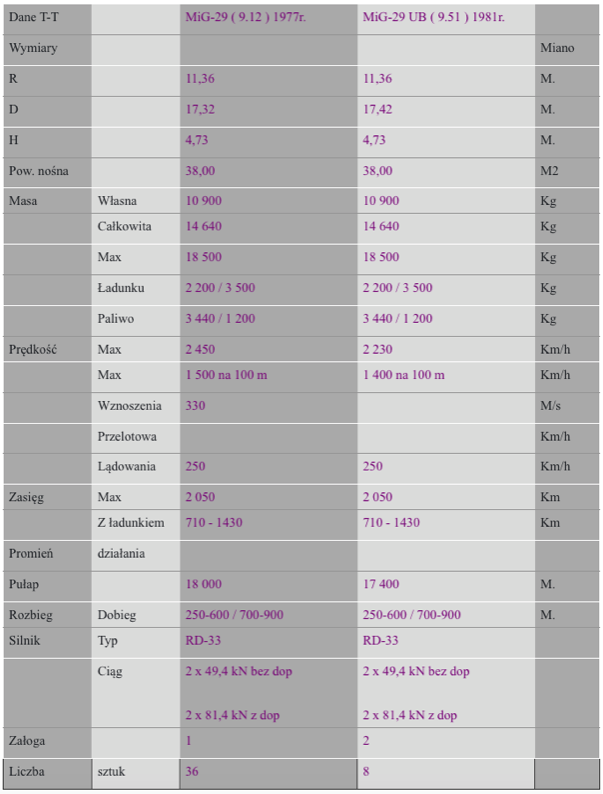
Written by Karol Placha Hetman
